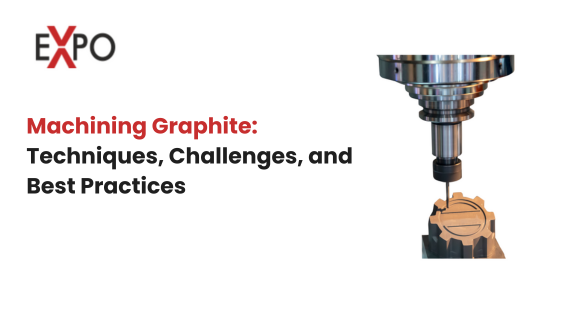Machining Graphite: Techniques, Challenges, and Best Practices

Graphite, an allotrope of carbon, stands out for its remarkable properties, including high thermal conductivity, resistance to heat and corrosion, and structural stability. These characteristics make it a vital material in industries such as aerospace, energy, and manufacturing. However, machining graphite presents unique challenges due to its delicate and abrasive nature. This blog explores graphite's machining process, common challenges, and effective strategies for success.
Why is Graphite Important?
Graphite is the most stable form of carbon under standard conditions and is naturally abundant. It is prized for its ability to withstand high temperatures, resist corrosion, and conduct electricity efficiently. These qualities make it a go-to material for applications in:
- Aerospace: Heat shields and high-performance components.
- Energy Sector: Battery electrodes and fuel cells.
- Electrodes: Crucial in Electrical Discharge Machining (EDM).
Despite its robustness under extreme conditions, graphite is soft, brittle, and abrasive, requiring specialized techniques for effective machining.
Challenges in Graphite Machining
Machining graphite is a meticulous process due to its unique physical properties. Key challenges include:
- Dust Generation: Unlike metals, graphite doesn’t produce chips but rather a fine, abrasive dust. This dust is harmful to both machines and operators if not properly managed.
- Tool Wear: Graphite’s abrasive nature accelerates tool wear, especially during high-speed machining.
- Coolant Absorption: Graphite’s porous structure absorbs coolant, which can compromise the integrity of machined parts and create abrasive slurries that damage equipment.
- Electrical Hazards: Graphite dust is highly conductive and can cause short circuits in CNC machines if not adequately removed.
Techniques for Machining Graphite
Several methods are employed to shape and process graphite, including:
- Compression Molding: Produces high-density parts with excellent structural stability.
- Isostatic Molding: Creates fine-grain, uniform graphite blocks for precision machining.
- Vibration Molding: Ideal for large graphite components.
- Die Molding: Effective for high-volume production of smaller parts.
- Extrusion: Produces continuous shapes like rods and tubes.
These techniques rely on fine graphite powder derived from natural or synthetic sources, ensuring consistent quality.
Best Practices for Graphite Machining
1. Use Dry Machining Techniques
Avoid coolant during machining as graphite’s porous nature absorbs fluids, which can degrade the final product. Instead, utilize a vacuum system or dust collector to manage debris.
2. Optimize CNC Settings
Use CNC machines capable of high spindle speeds (over 20,000 RPM) for efficient material removal. Adjust feed rates and tool paths to minimize tool wear and maximize precision.
3. Dust Management
Graphite dust can damage equipment and pose health risks. Equip machines with a dust collection system, and ensure operators wear protective masks and work in ventilated areas.
4. Protect Equipment
Prevent graphite dust from accumulating on bearings, circuits, or moving parts. Regular cleaning and maintenance are essential to prolong equipment life.
Unique Characteristics of Graphite
- Density: Dense graphite offers better geometry control but slower material removal.
- Grain Size: Fine-grain graphite improves surface finish and reduces wear.
- Electrical Resistivity: Lower resistivity enhances thermal conductivity and reduces wear rates.
- Flexural Strength: Higher strength aids in detailed machining and reduces tool wear.
Conclusion
Graphite machining is a specialized process requiring precision, high-performance equipment, and proper safety measures. By understanding its properties and implementing best practices, industries can leverage graphite’s unique characteristics to produce superior components. Whether in aerospace, energy, or EDM applications, mastering graphite machining is key to achieving consistent, high-quality results.
Other Product:
- Art
- Causes
- Crafts
- Dance
- Drinks
- Film
- Fitness
- Food
- Games
- Gardening
- Health
- Home
- Literature
- Music
- Networking
- Other
- Party
- Religion
- Shopping
- Sports
- Theater
- Wellness


